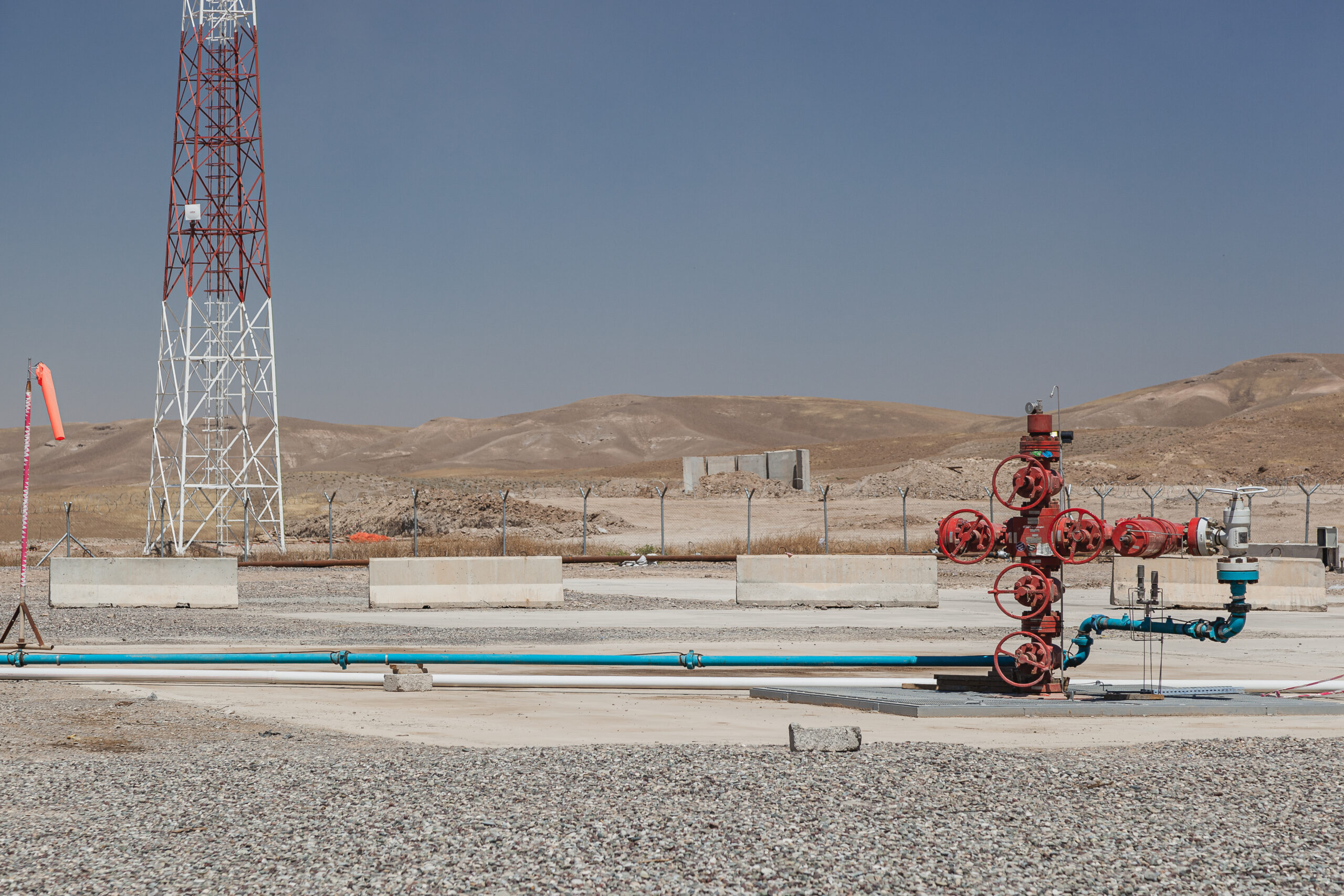U.S. gas prices drop to multi-decade lows, forcing drilling rein-in
U.S. gas prices plunged below $2/MMBtu this winter, largely because of warm weather. Gas companies unable to turn a profit are slashing drilling plans.

U.S. gas prices plunged to multi-decade lows in February as tepid demand and soaring output led to a glut in the market. Rock-bottom prices, in turn, are forcing gas drillers to cut drilling and production plans for 2024.
On Feb. 20th, Henry Hub prices — the benchmark U.S. natural gas price — fell to $1.50 per million Btu (MMBtu), the lowest level since 1997 after adjusting for inflation, according to the U.S. Energy Information Administration.
Warm weather across much of the North American continent — accentuated by the steady march of the worsening climate crisis — suppressed gas use during what is typically the most demand-intensive part of the year. Meanwhile, upstream production hit record highs at over 105 billion cubic feet per day in recent months.
“This winter has been a complete disaster,” Vince Piazza, a senior energy equity analyst at Bloomberg Intelligence, said on a February webinar. He had previously predicted that gas prices would be trading much higher, but owned up to his missed forecast.
Warm weather and high production has left the market awash in gas. As a result, storage levels stood at 2,470 billion cubic feet on Feb. 16th, which is about 22 percent higher than the average over the past five years.
Cutback in drilling
U.S. gas drillers are now feeling the financial squeeze at such low price levels. Reuters reports that oil and gas companies have eliminated thousands of jobs in recent months, with oilfield service firms bearing the brunt of the slowdown. Roughly 4,680 jobs have been lost since December.
A few high-profile companies announced that they would begin trimming their drilling plans.
“Today, the market is clearly oversupplied,” Nick Dell’Osso, CEO of Chesapeake Energy, told investors on a Feb. 21st recent earnings call. Chesapeake is a large gas producer with operations in Louisiana’s Haynesville shale and Appalachia’s Marcellus shale.
Dell’Osso said that Chesapeake decided to cut spending by 20 percent this year, and lower gas production by 15 percent, compared to its previous outlook. The company reduced the number of active rigs drilling for gas by two. Its share price, and those of other gas companies, rose after that announcement, as investors appeared relieved that the company would be spending less and that the supply glut might ease.
Others have decided to follow a similar strategy.
“Experience tells us that our focus should always be on returns and never on production or activity. In this case, that means throttling back on our Marcellus program,” Tom Jordan, CEO of Coterra Energy, a Houston-based oil and gas company, told investors on an earnings call.
“The impact of new LNG export capacity coming online at the end of 2024 and early 2025 coupled with the possibility of cold weather provides reasonable hope for significant price recovery in natural gas,” he said. But, in the interim, “we will be patient and watch for recovery in the gas macro.” Jordan added that Coterra’s gas production in the Marcellus shale would slip by 6 percent this year.
It isn’t just the U.S. that is seeing a glut in gas. Japan, one of the largest LNG importers in the world, is seeing gas storage levels significantly higher than is typical for this time of year. Gas stocks were about 1.7 billion cubic meters above the ten-year average in mid-February. The amount of gas burned in power plants was down 16 percent in the first 11 months of 2023, compared to a year earlier, driven down by higher electricity generation from nuclear power and renewables.
In Europe, gas prices have fallen back to levels not seen since before Russia’s invasion of Ukraine.
“Gas and LNG flows into Europe remain steady as warmer-than-normal winter weather keeps demand low,” Rystad Energy analysts wrote in a Feb. 20th report.
U.S. gas companies are hoping that a period of drilling restraint will erase some of the surplus and lead to a turnaround in their fortunes.
“We see further [production] declines in the first half of 2024 as the impact from a 25-percent-plus drop in gas rigs since March begins to set in, especially in the high decline Haynesville play where the rig count remains well below maintenance levels,” Jeremy Knop, the CFO at EQT, the largest gas producer in the U.S., told investors.
His comments suggest that EQT, an Appalachian-focused company, is betting that weaker companies in Louisiana’s Haynesville shale won’t be able to withstand such low prices, which will curtail U.S. gas production. Knop asserted that Haynesville producers need gas prices to trade at $3.50/MMBtu just for them to break even, far higher than current price levels. U.S. Henry Hub prices have been trading below $2/MMBtu for weeks.
Bloomberg Intelligence echoed a similar logic — that the industry cannot grow gas production anymore, at least not at current prices.
“At the end of the day, investors really don’t want to see the output growth, and they are rewarding the companies today [that are] putting out production cuts across the board,” Piazza said.
Prices trading below two dollars for an extended period of time, “I don’t think it’s sustainable,” he said.



